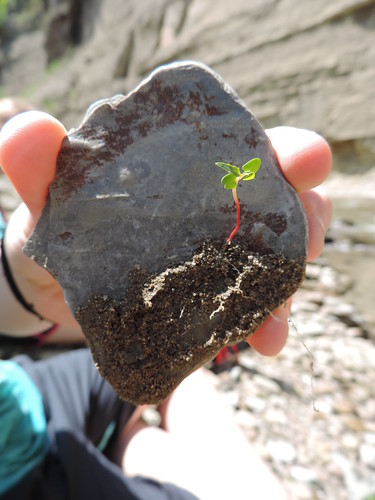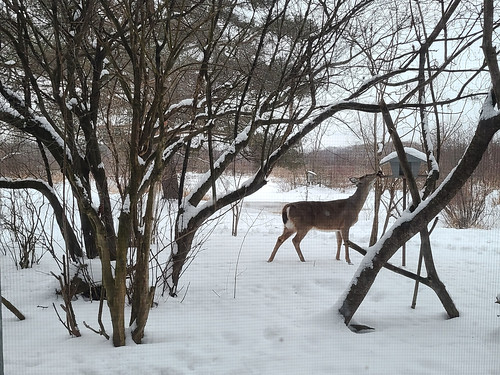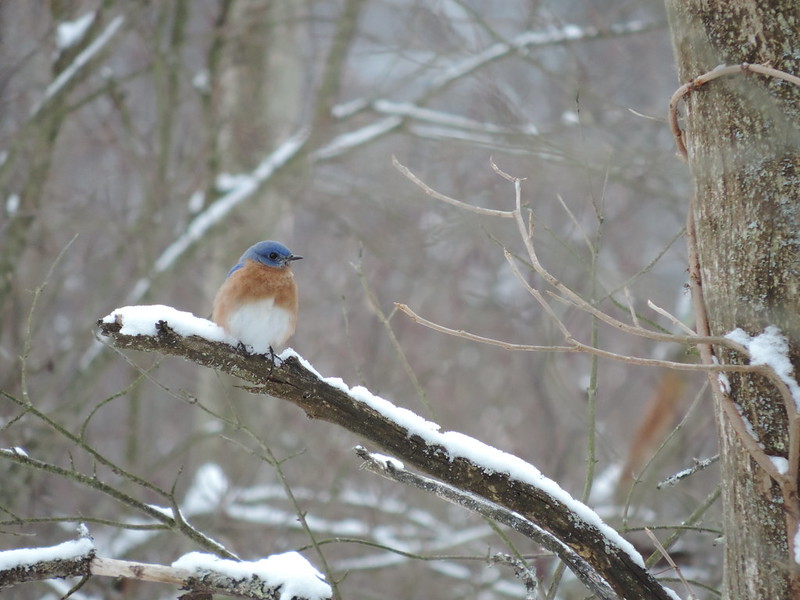Cycles and patterns are abundant in nature. Every year flowers die and new ones burst forth when the conditions are right, thousands of leaves fall off trees only to regrow the following year and many birds, bats, and butterflies migrate south for the winter and return when the days grow longer and the weather warms up. However, not everyone out there gets the memo.
Humans like to generalize and create trends. We sometimes live a little too much in this all-or-nothing, black-and-white, put-it-in-a-box kind of mindset. That can lead us to forget that when we are talking about any given plant or animal species, we are often talking about many, many individuals each making the decision that gives them and their offspring their best chance for survival.

Despite the overall recurring rhythms and patterns we count on in nature, there is always a rebel who makes us scratch our head when we see them behaving or even just existing in an unexpected way or place. The birds that are supposed to fly away to warmer and friendlier climates don’t always leave. Sometimes the bluebirds and robins that supposedly migrated months ago make an appearance at your bird feeder in the middle of February. It doesn’t matter how firmly you tell them they are not supposed to be here; they just aren’t going to listen.
I am very much a casual observer and not an ornithologist, so I can’t say I know why each of these anomalies sticks around through the cold months. In some cases, if they find a reliable food source, it might just make sense for them to stay. This is not to say that leaving your bird feeders out encourages birds not to migrate. They are following other environmental cues and most will leave even if food is still out in the feeder, so keep those feeders stocked with birdseed and suet if you like. The resident bird species who do not migrate, like Blue Jays and cardinals, will most certainly appreciate it as well.
Although I frequently hear concerns about seeing birds at times that are not necessarily normal, this is far from limited to birds. Sometimes animals that we expect to hibernate are out in the winter, and other times animals that we generally think of as nocturnal make a special daytime appearance.
There are plenty of out-of-the-ordinary sights in nature, but there are also the unexpected moments that we just didn’t previously know about. I remember when I first saw snow fleas, which are not actually fleas but instead a small arthropod that lives across the United States. They exist all year round, but they are easier to see or far more notable when you see them on top of the snow in winter months. My first sighting was a small clump of them and I was baffled as to what these tiny creatures were doing hopping around on top of the snow. More recently, I was out with students and we saw them cover the entire forest floor at Audubon. You could not take a step in any direction without running into them, so we walked in each other’s footprints until we made in through the forest.
Many people tend to think of bugs as a spring or summer sighting, so every time someone discovers a spider walking on the snow for the first time and wonders how they are not frozen, they are discovering something unexpected. While these types of encounters can be confusing, they are not necessarily odd. They are just something we have never encountered before and we must accommodate this new information somewhere in with our pre-existing notions.

And sometimes those unexpected moments are not unheard of, unusual or weird, they are just that, unexpected. You might turn a corner and find an amazing view ahead or an animal staring back at you or it could be as simple as looking out the window to see a deer eating out of your bird feeders. You may have seen these things before but they are moments that you did not anticipate and that either awe you or engage your curiosity, both of which make the world a little less monotonous. Heading outside often means finding something new or interesting in the midst of the constants you may have come to expect.
So when you see something out of season, or when an animal appears a little later or earlier in the year, definitely make note of it. Do some research and see if this is normal or if others are noticing the same things. See if it happens again next season. Maybe this is an anomaly or just a few animals that decided to make a special appearance. Or maybe it’s the start of a new trend as animals face a rapidly changing climate and continue to learn to exist with our ever-growing and changing human population and antics.
Audubon Community Nature Center builds and nurtures connections between people and nature. ACNC is located just east of Route 62 between Warren and Jamestown. The trails are still open from dawn to dusk as is Liberty, the Bald Eagle. The Nature Center is partially open, including restrooms, the Blue Heron Gift Shop, and some exhibits. More information can be found online at auduboncnc.org or by calling (716) 569-2345.


Recent Comments